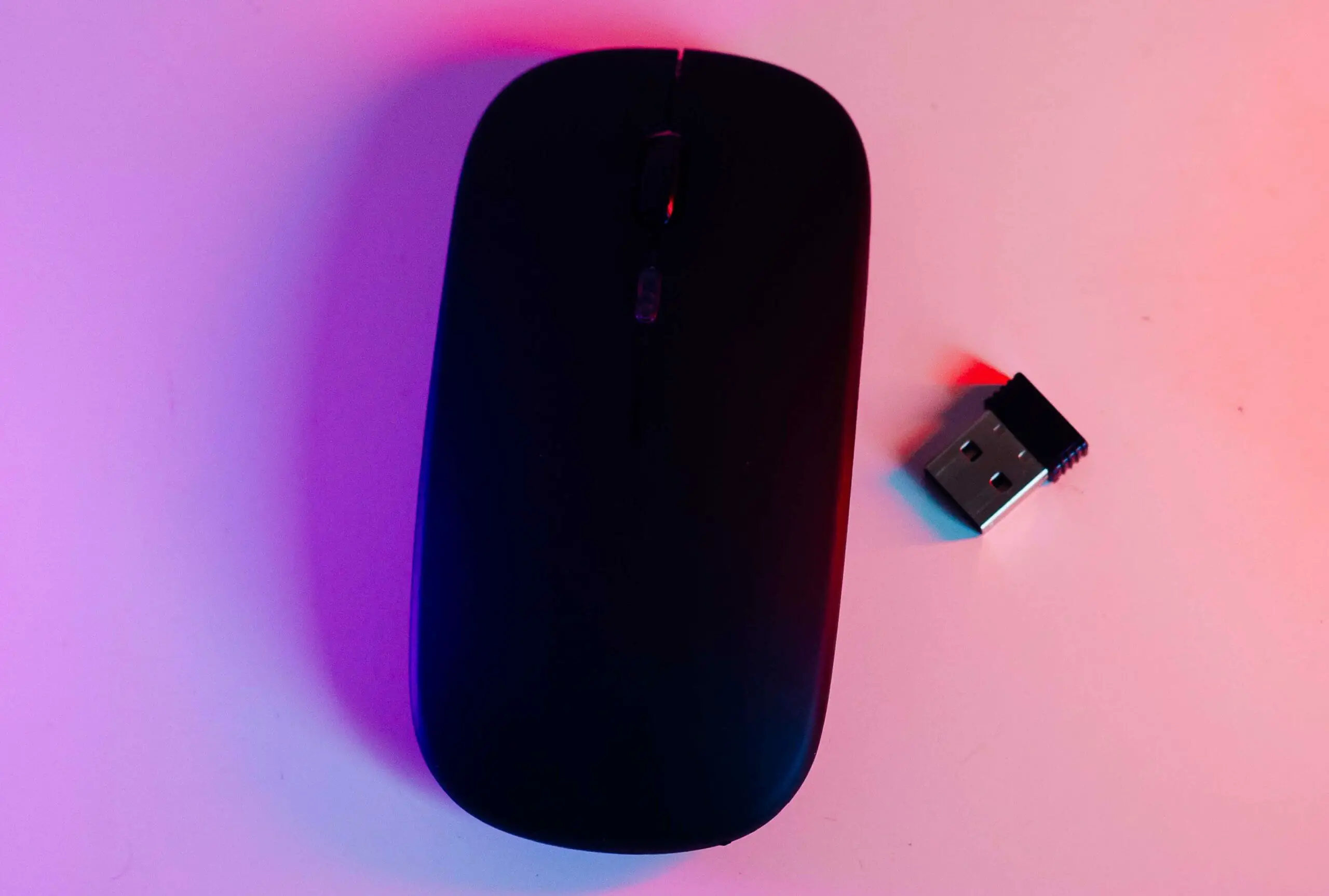So, you’ve got a sleek new MacBook and a wireless mouse to go with it, but how do you connect the two? Don’t worry; I’ve got you covered!
Three methods to connect a wireless mouse to a MacBook are Bluetooth pairing, using a USB receiver, and connecting via radio frequencies. Below I’ve covered their step-by-step guide, so you can choose which method works best for you and enjoy that clutter-free desk you’ve been dreaming of.
Let’s jump in and pair that wireless mouse with your MacBook!
Overview of Step-by-step Guide to Connecting a Wireless Mouse
| Method | Steps |
|---|---|
| Bluetooth Pairing | → Turn on the wireless mouse. → Enable Bluetooth on your MacBook. → Initiate pairing mode on the wireless mouse. → Connect the wireless mouse to MacBook. |
| USB Receiver | → Locate the USB receiver. → Insert the USB receiver into an available USB port on your MacBook. → Turn on your wireless mouse. → Wait for your MacBook to detect and connect the wireless mouse via the USB receiver. |
| Radio Frequencies | → Find the RF adapter. → Plug the RF adapter into an available USB port on your MacBook. → Power on your RF mouse. → Wait for your MacBook to detect and connect the RF mouse via the RF adapter. |
Connecting Your MacBook and Wireless Mouse via Bluetooth
Step 1. Turn on the Wireless Mouse
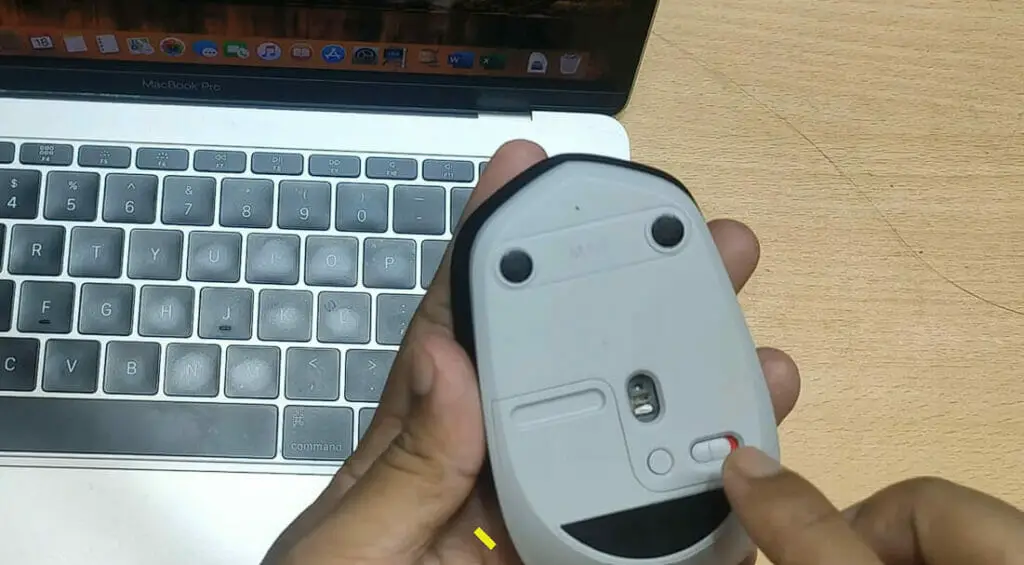
First, ensure your wireless mouse is turned on and has sufficient battery life.
1. Locate the power button or switch on your wireless mouse – usually on the bottom or side.
2. Turn on the mouse with a simple press or switch.
Step 2. Enable Bluetooth on Your MacBook
Let’s ensure Bluetooth is enabled on your MacBook to find and connect to the wireless mouse. Follow these steps:
1. Click the Apple icon in the upper left-hand corner of your screen.
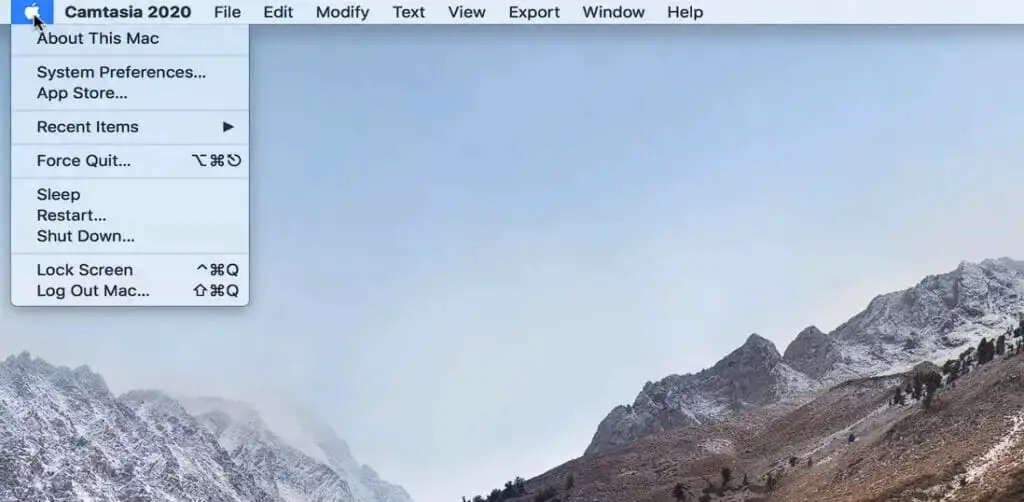
2. Select System Preferences from the dropdown menu.
3. Click the Bluetooth icon to open the Bluetooth settings.
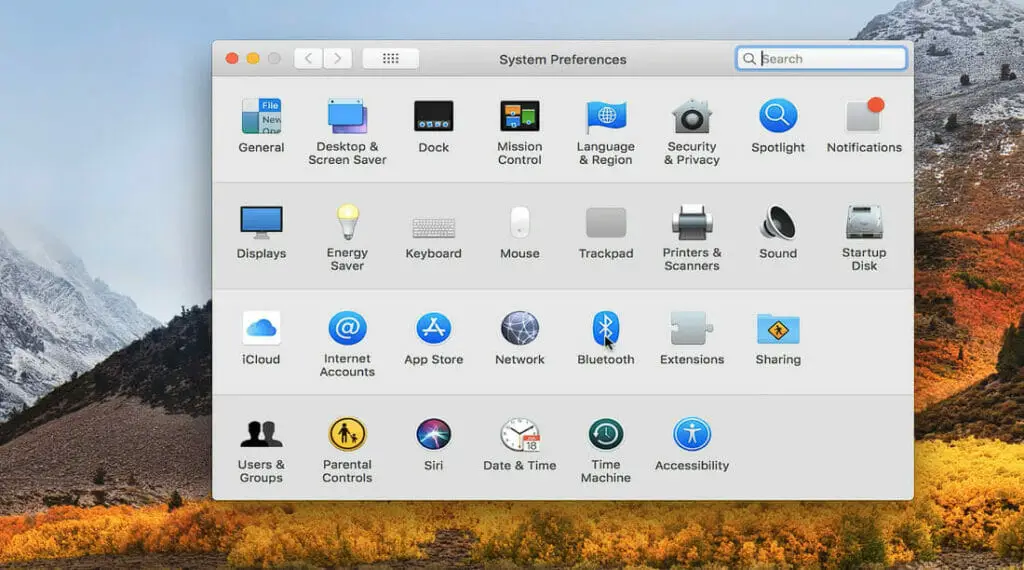
4. If Bluetooth is off, click the Turn Bluetooth On button to enable it.
Step 3. Initiate Pairing Mode on the Wireless Mouse
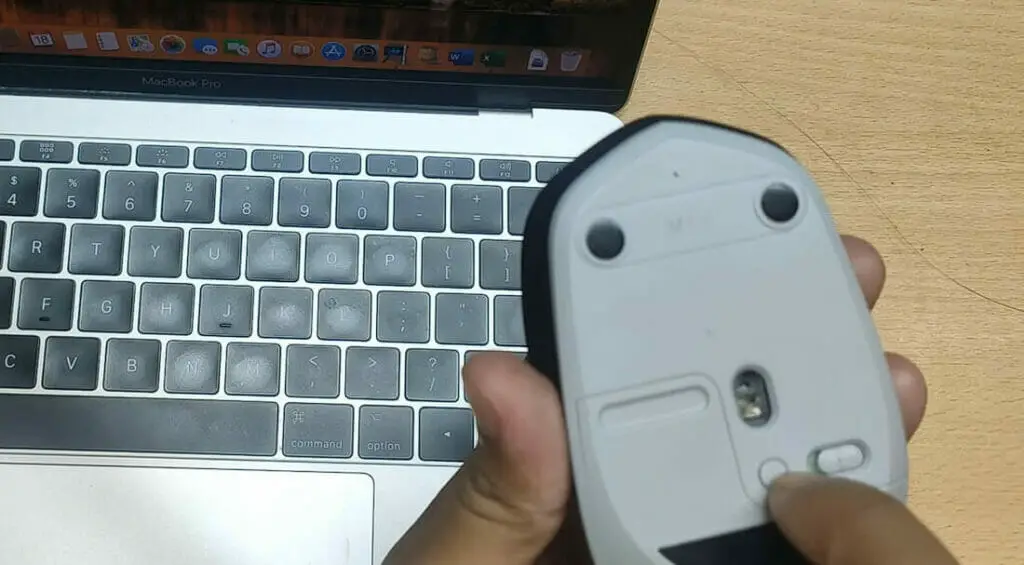
Now, let’s initiate the pairing mode on your wireless mouse:
1. Some mice might have a pairing button. If yours does, locate your wireless mouse’s connect or pairing button. It’s usually at the bottom or side.
2. Press and hold the button until the mouse’s LED starts blinking, indicating it’s in pairing mode and discoverable.
3. Keep the mouse close to your MacBook to ensure a smooth connection.
Step 4. Connect the Wireless Mouse to MacBook
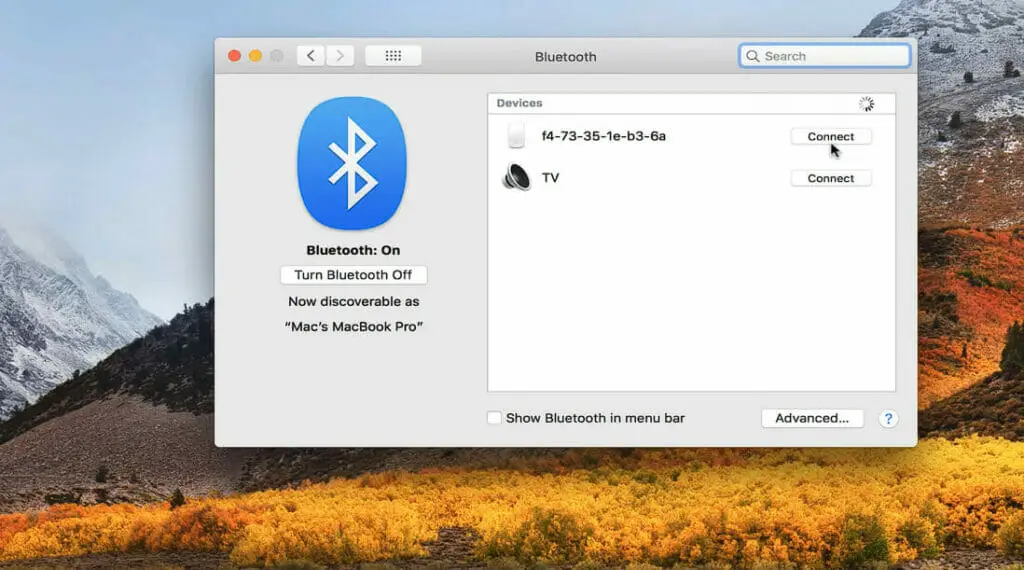
Now that your wireless mouse is in pairing mode, your MacBook should automatically start searching for nearby Bluetooth devices. Give it a moment to find your wireless mouse.
1. Once your wireless mouse appears in the list of devices, click the Connect button next to its name.
2. Wait for a brief moment as the pairing process takes place. macOS will let you know once the connection is successful.
That’s it! Now you can enjoy using your wireless mouse with your MacBook. Don’t forget to turn off the wireless mouse when you’re done using it to conserve battery life.
Remember, you can always access your Bluetooth settings in the menu bar at the top-right corner of the screen for quick adjustments on the fly.
Using Alternate Mouse Connection Methods
I’m always looking for more efficient ways to use my devices. As promised, I’ll share alternative methods for connecting a wireless mouse to your MacBook in this section. We’ll be looking at using a USB receiver and connecting via radio frequencies.
Using a USB Receiver
Connecting a wireless mouse with a USB receiver (a dongle) is straightforward. The main advantage of using a USB receiver is that it usually offers a more stable connection than Bluetooth. Here’s a simple step-by-step guide:
Step 1. Locate the USB receiver that came with your wireless mouse. It’s usually small and easy to plug into your MacBook’s USB port.
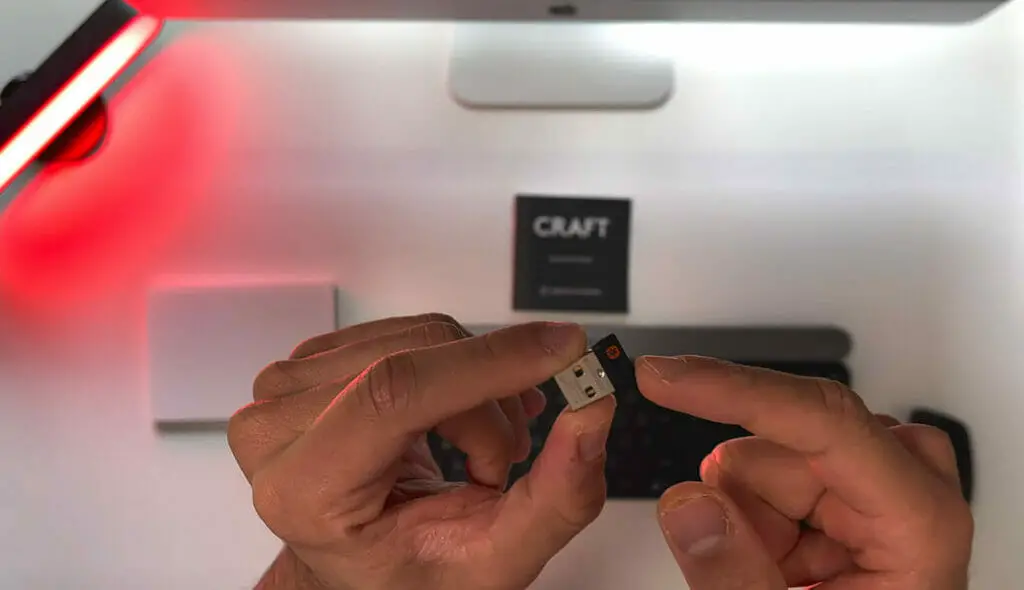
Step 2. Insert the USB receiver into an available USB port on your MacBook. Make sure it’s connected securely.
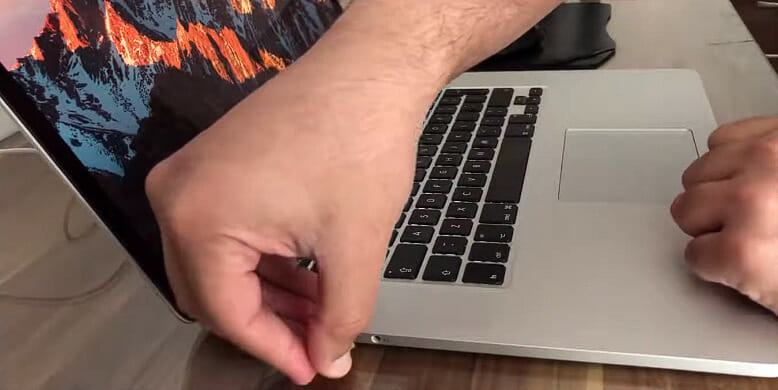
Step 3. Turn on your wireless mouse. Most models come with a power button on the bottom.
Step 4. Give it a moment; your MacBook should automatically detect and connect the wireless mouse via the USB receiver.
That’s it! You’ve successfully connected your non-Bluetooth wireless mouse using a USB receiver.
Connecting via Radio Frequencies
Another method of connecting your wireless mouse is by using radio frequencies. Some wireless mice use radio frequencies, or RF, rather than Bluetooth for a more stable connection. To use an RF mouse, you’ll need an RF adapter. Follow these simple steps:
Step 1. Find the RF adapter that came with your RF mouse. It’s similar to a USB receiver but works exclusively for RF mice.

Step 2. Plug the RF adapter into an available USB port on your MacBook, ensuring it’s securely connected.
Step 3. Power on your RF mouse by switching the power button on the bottom of the device.
Step 4. Allow a moment for your MacBook to detect and connect the RF mouse via the RF adapter.
And there you have it! Your RF mouse is now connected and ready to use with your MacBook. Enjoy the freedom of working without a wired mouse; remember, you’ve got options for connecting your wireless mice.
Troubleshooting Common Issues
As a Mac user, I know how frustrating it can be when facing issues with your wireless mouse. To help you out, I’ve provided some common issues and their fixes below.
Wireless Mouse Not Connecting
Sometimes, you might find that your wireless mouse won’t connect to your MacBook. Here’s what I usually do to solve this issue:
- Ensure your Mac’s Bluetooth is turned on by going to System Preferences > Bluetooth.
- Ensure the mouse is in pairing mode. Depending on the model, a button might be pressed and held.
- Move the mouse closer to your MacBook, as it may be experiencing range issues.
- If your mouse uses a USB dongle, check if it’s securely connected to your MacBook.
Cursor Movement Issues
Experiencing an unsmooth or unresponsive cursor? Here are some steps that have worked for me:
- Check your mouse’s LED light (if it has one). This should give you an indication of its current status.
- Ensure there’s no interference between your mouse and the trackpad.
- If the issue persists, disconnect and reconnect your mouse through the Bluetooth settings on your MacBook.
- It could also be a driver problem. Visit your mouse manufacturer’s website for the latest driver updates.
References
Organizations:
- Bluetooth SIG. https://www.bluetooth.com/develop-with-bluetooth/join/
- Consumer Technology Association (CTA). https://www.cta.tech/
Websites:
- Apple Support. https://support.apple.com/?cid=gn-ols-home-hp-tab
- iMore. https://www.imore.com/
- Macworld. https://www.macworld.com/
Video References
IT Magics
AMIR BENDABI
ComputerScienceVideos
Dan’s Guide to Everything

